Contents
Generation Z does not know but there is a fact that baby boomers and Generation Y know very well that there were two types of people around the world until the Soviet regime collapsed. In other words, you were either side of the modern world in favour of freedom (!) or you were side with the oppressive, cruel (!) and anti-freedom communists. (October Revolution Side!) Many of us clearly remember the films, propaganda tools and discussions of the cold war period, specifically in the chaotic world, whose violence gradually increased after World War II.
Especially, weren’t there plenty of libertarian (!) US movies with American flags produced by that Hollywood propaganda machine 🙂 We have all watched this kind of movie on Sunday evenings during the cold winter nights. Actually, the foundation of the cold war period, which ended with the collapse of the Soviet regime during the Gorbachev period in 1990, originally dates back to 1917 Bolshevik October Revolution.
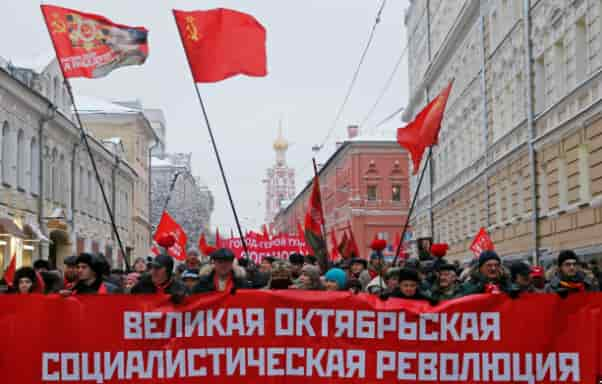
What Led to the October Revolution? Understanding Its Causes
The October Revolution in 1917, which perhaps changed the fate of the war by causing the Russians to withdraw from the World War I., is one of the important events that changed the flow and course of world history with its causes and consequences. The revolution deeply affected world political history with the establishment of the Union of Soviet Socialist Republics (USSR) under the leadership of Lenin, the Leader of the Bolsheviks. In addition, the 1917 Russian October Revolution shook the British-American-based Anglo-Saxon western dominance and triggered many war risks, including nuclear and space wars.
Ultimately, it should be noted that; In order to understand today, we need to know world political history well. Russia’s invasion of Ukraine and the Israel-Palestine War can both be read with this political history. We have already stated many times that it is important to follow world politics in terms of personal development and career management, right? 🙂
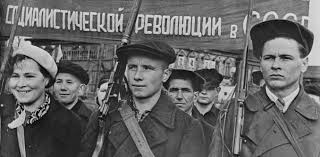
Key Figures of the Revolution: Lenin, Trotsky, and the Bolsheviks
When communism is mentioned, concepts such as freedom, equality and justice usually come to mind first. Afterwards, the USSR which was once one of the world’s two superpowers comes to mind. (Along with Lenin and Stalin of course) At this stage we have to say that as N.Harari stated in his book Sapiens, there have been three systems of government that existed or tried to survive in the modern political era. (Please look at imperialism, liberalism and capitalism also.)
Fascism, based on oppressive and racial superiority, collapsed after the defeat of Hitler’s Germany after World War II. The second system of government, Socialism or Communism, collapsed with the USSR in the 1990s. Finally, Liberal Democracy or Capitalism which survived and according to some, began to die with the internet age, fought its biggest war in recent history with the Communist administration.
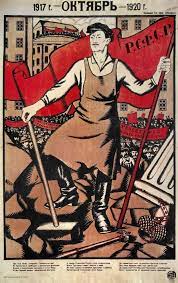
When we briefly ask what the October revolution is in 1917, the shortest definition we can make based on this information is the overthrow of Tsar Nicholas II as a result of the uprising that took place in February 1917. Afterwards, the provisional government that replaced the Tsar was also overthrown by the Bolsheviks on October 25, 1917, and power passed to the Bolsheviks led by Lenin. (November 7, 1917 according to the Russian Julian calendar)
The word Bolshevik means “for the majority, pluralist” and was used to represent the political party led by Lenin at that time. Although the world experienced the French Revolution of 1789 and the American Revolution, it was surprising at first that such a great revolution took place in Russia. The establishment of a Socialist government for the first time in the world and the realization of the Great Russian Revolution in a long-established country that had been governed by the Tsarist Monarchy for 400 years changed the world political history.
The Seizure of Power: Events of October 1917
In the year 1916 was spent under very difficult and harsh conditions in Russia, especially the winter months, while the World War I. was continuing, as the British were unable to cross the Turkish Straits and send aid to the Russians. In the first place, we need to know that; Tsarist Russia entered the world war with the intention of returning to its former glory days and expanding its territory.
However, as time progressed and the third year of the war was about to end, economic conditions in the country became so severe that; People were shouting in the streets, “Bread, just some bread.” As a natural result of these facts, as the Russian October Revolution approached, Lenin could hear the footsteps of the revolution from the echoes and reactions on the streets. The conditions for a great revolution were slowly maturing.
On the other hand, apart from economic reasons, the fact that the people are tired of the war that is getting longer and longer (increasingly against Russia) and the burdens brought by the war is also an important reason for the revolution. Saying that around 200-250 thousand soldiers escaped only from the Caucasus front of the war will be an important indicator of the gravity of the situation. In this context, the fact that the war does not seem to end in the short term has caused social problems as well as economic problems.
Most Important Reason Of the Events

In addition, the Tsarist administration’s disengagement from the realities of its own people over time has an important place among the reasons for the 1917 October Revolution. Accordingly, it would be enough to say that the army and soldiers involved in the World War were not adequately equipped and armed. Unfortunately, Tsarist Russia, was unaware of this situation or was not interested in their soldier dire situation. The continuation of the war in order to expand their lands while the people were receiving bread with ration cards is an important indicator of the disconnection between the realities between the people and the Tsarist administration.
The nationalist movements that started in Europe after the French Revolution negatively affected the Russian Empire, as well as all other empires. In the last period of the empire, which included Slavic nations, Georgians, Armenians, Turkic nations and various peoples, the Russification policy and oppressive approach increased.
At this point, the French Revolution increased the possibility of these peoples affected by nationalist movements to support a major revolution in order them to separate from the empire.
Other Reasons for the Big Russian Movement
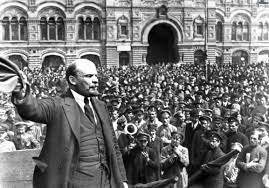
At this stage, although we can list many similar reasons, large and small, these are the most basic and well-known reasons for the 1917 Russian Bolshevik October Revolution.
If we briefly list the reasons for the October Revolution:
- Tsarist Russia’s dream of returning to the old days and its desire to gain land,
- The fact that the people are suffering in poverty in the streets, chanting “bread, bread“. In this context, we must state that the World War I. made the already bad economic situation even worse.
- The fact that the Tsar was disconnected from the realities of the people, that is, he was fighting in the world war with the desire to gain land while the economic situation of the people was so bad.
- The prolongation of the First World War and its development against Russia,
- The neglected and unequipped situation of the army,
- After emerging the nationalist movements of the French Revolution in 1789, the people living in the empire created turmoil with the desire to determine their own destiny.
- Additionally, the presence of separatist officers in the Russian Army and the presence of soldiers who did not fire against the rebellious people were effective in the growth of the March and rebellion.
Impact of the Revolution: Establishing the Soviet Union
In the second year of the war, that is, in 1916, strikes began to increase throughout Russia and the people and workers shouted “Damn the war, we want bread!“ They took to the streets with slogans. Meanwhile, after the war started, Tsarist Russia, which was fighting against Germany, changed the name of the capital from Petersburg to Petrograd by removing the German phrases. By February 1917, revolution had become inevitable.
The people took to the streets for bread and the soldiers of the Russian army refused to shoot their own people. The people, taking the soldiers with them, deposed Tsar Nicholas II on February 25, 1917. The revolution that took place in February was rather called the Bourgeois Revolution. Another important aim of the revolutionaries who wanted to end land feudalism was to withdraw Russia from the World War.

Lenin thought that the people were not yet ready for communism. On the other hand, he also thought that the temporary government established instead of the Tsarist administration after the February Revolution could not realize the revolution they desired. Because this government also included Mensheviks, who were opponents of the Bolsheviks, and it was a provisional government with broad participation. Finally, on October 25, 1917, Lenin and Trotsky, who received the support of the people, staged a coup against the provisional government, carried out the October Revolution of 1917, and the first thing they did was to withdraw Russia from the World War.
Thereupon, supporters of the collapsed monarchy started a civil war against Lenin and the Bolsheviks. As a result of this civil war, which started in 1917 and lasted until 1922, the Union of Soviet Socialist Republics was established and Lenin became the president of this newly established Socialist-Communist state.
How the October Revolution Shaped 20th Century
The Bolsheviks party, which means also “socialist party“, led by Lenin, carried out the “1917 Bolshevik October Revolution” against the “1917 February Bourgeois Revolution“. The complete seizure of power by the Bolsheviks had significant effects and consequences on world political and war history. The most important result that we all know and memorize in schools was Russia’s withdrawal from the First World War. Russia now started to deal with its own internal problems and focused on the Russian civil war of 1917-1922, which would last for 5 years.

Another most important action of Lenin’s Bolshevik government was to enact the Land Law. With this law and decree, lands were taken from feudal landowners and distributed to the poor people. Additionally, with this land reform, people’s support for the new system was gained. It shouldn’t be forgotten that that the continuation of the war and being left without bread were one of the important reasons for the revolution for the people. In this context, people’s support for the new system was very important.
With the breakthroughs it made after the 1917 Russian October Revolution, Soviet Russia quickly became one of the world’s two superpowers. At this point, rapid social, educational and scientific steps have been taken. Along with these developments, the socialist communism system has firmly established itself against the liberal democracy system in the world. Thanks to the October Revolution and its effects being closely monitored by the whole world, communism and socialism began to spread rapidly all over the world. Especially after the victory of the USSR against Fascist Hitler’s Germany after the II. World War many countries, especially in Europe, switched to the socialist system which were also called the iron curtain countries.
October Events Impacts on World
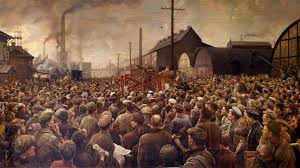
The Bolshevik Russian October Revolution of 1917, which was very important in terms of its results and impacts, left great traces throughout the world. We see these huge impacts even in American and European films. Careful eyes will see the fear of the Socialist Soviets even in films such as “A Beautiful Mind” or “Enigma” whose plot covers the period 1917-1990.
In fact, in countries governed by liberal capitalism, politicians accused those whose views they did not like of being “socialists“, “communists” or “Soviet agents” for a long time 🙂 The political forces ruling the countries also pointed to the USSR to their people, stating that the Soviets had nuclear weapons and intended to start World War III. So, they could rule their people more easily thanks to Soviet fear.
Additionally, until the 1990s, the concept of left and right was more important and deeper in the world. In other words, after the Soviets collapsed and the “End of History” came, (Fukuyama’s words) countries governed by liberal democracy would no longer be able to govern their people with the fear of the socialism danger. This will be of course be the subject of another article. The socialist wave affected a significant part of Europe, the Balkans, Africa, Asia and the American continent.
USSR, Lenin and Bolshevik
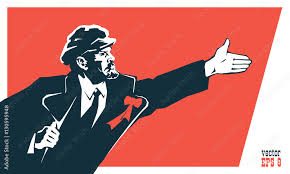
Here, we tried to touch on the USSR, Lenin and Socialist Revolution as impartially as possible. It is clear that while positive breakthroughs were made in Russia during the USSR period, extremely negative and harmful trends and movements also took place. A system that was completely positive and had nothing wrong wouldn’t collapse, right? It is a historical fact that millions of people were killed in Russia during that period. On the other hand, it is also known that with this system, Socialist Russia became one of the world’s two superpowers at one point.
At this point, as Noah Harari stated, it would be unrealistic to praise or criticize the socialist era in a world where liberal democracy exists and governs. It would be best to leave the judgment about the USSR and Communism to history, with the perspective that every historical phenomenon should be evaluated within its own conditions.
